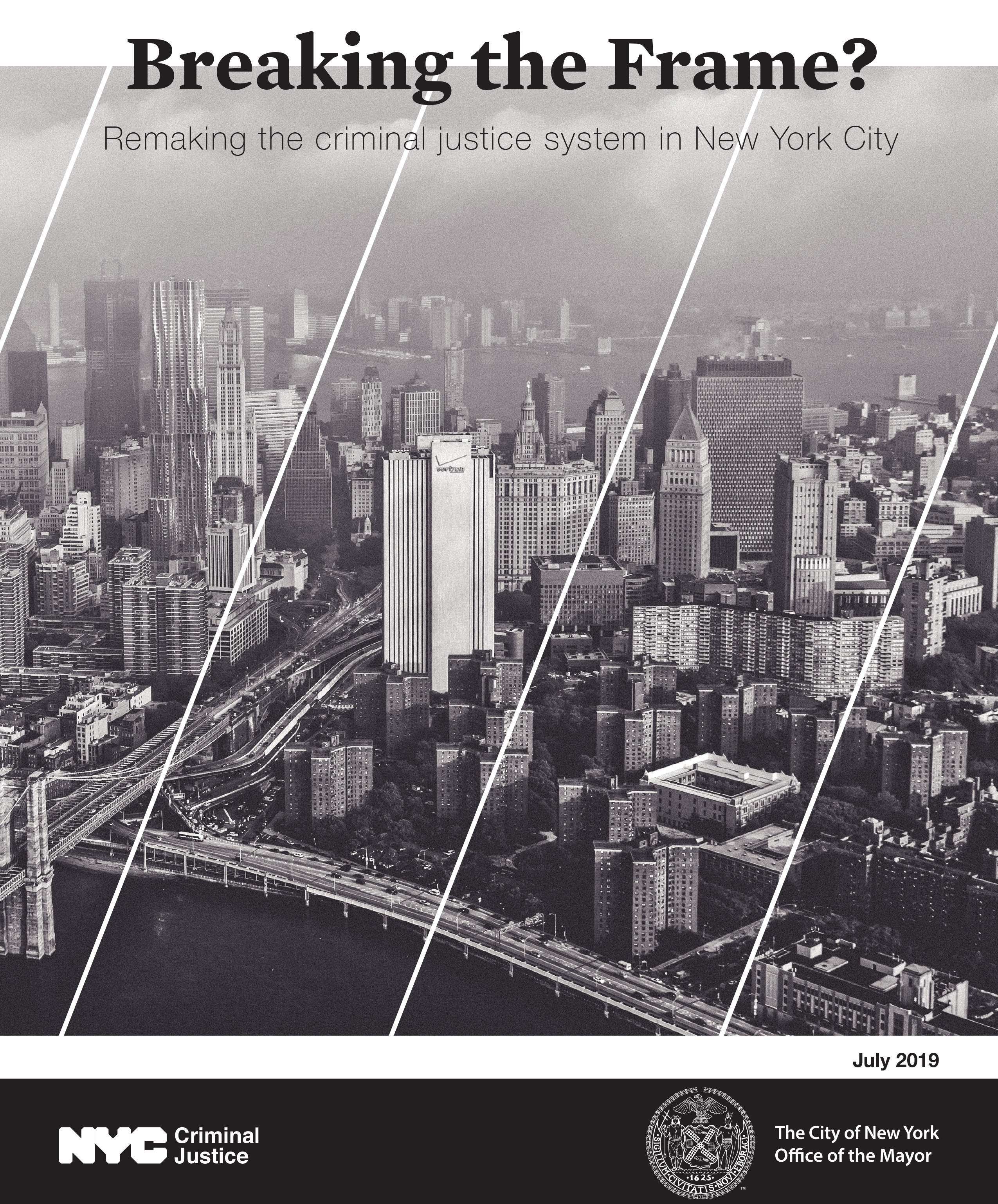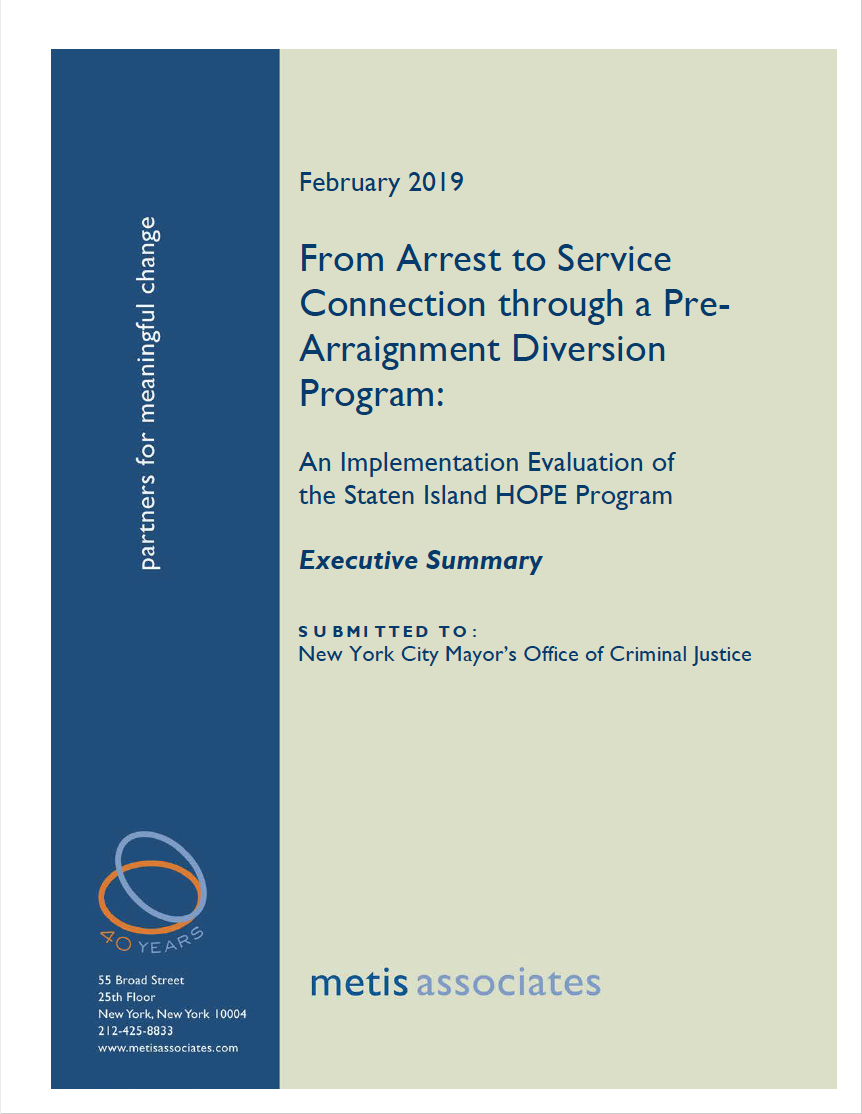Safely Reducing the Jail Population: Diversion
Issue
New York City has set ambitious targets to safely reduce the number of people in its jails through Alternative to Detention (ATD) and Alternative to Incarceration (ATI) programs. These programs provide services in the community to individuals with open criminal cases either while they are awaiting the conclusion of their case or in lieu of a jail sentence. Services include mental health and substance use treatment, vocational and educational support and development, and trauma-informed counseling, as well as supervision and regular reporting to the court.
Solutions
The number of people in custody has fallen dramatically in recent years due in large part to new ATD programs that allow defendants to wait for trial in the community and ATI programs that divert people into supportive community-based services rather than imposing a jail sentence.
Highlights include:
Citywide alternative to bail program.Supervised Release launched citywide in March 2016 after being developed by judges, prosecutors, and defenders. Supervised Release gives judges the option to release people deemed eligible by the Supervised Release pretrial risk assessment tool (defendants assessed at high risk of felony pretrial re-arrest are ineligible) who would otherwise be detained due to their inability to make bail. The program tailors requirements to the individual participants.
Expanded diversion for women. While the number of incarcerated women continues to climb nationwide, the number of women in New York jails has fallen. The City has recently launched two new programs to continue these reductions, while addressing the unique needs of women facing detention. These programs include:
- Transitional supportive housing for women experiencing homelessness, providing them with a stable place to live and allowing them to qualify for alternative-to-jail programs while awaiting trial.
- Securing release for eligible women on Rikers Island through the use of defender-based advocacy and mitigation services and alternative-to-jail programs.
Replacing short jail sentences with supportive services in the community: In July 2017, the City launched ATI programs in Manhattan, Brooklyn, and the Bronx to dramatically reduce short jail sentences. In 2017, about 7,000 people received jail sentences of up to 30 days; Many of these individuals are homeless and have severe mental health and substance use issues, and have therefore cycled in and out of jail numerous times throughout their lives. Rather than imposing additional short jail stays, this new program allows judges to address defendants’ needs that often contribute to their repeat involvement in the criminal justice system in order to prevent them from returning to jail. Since the program went into effect, there has been a 29% decline in the number of people who went to jail on a short sentence.
Individualized Alternatives to Incarceration (ATI) Programs: The City funds numerous community-based ATI programs throughout New York City that are specifically tailored to meet the service needs of defendants in Criminal and Supreme Court to prevent them from returning to jail. These programs provide various services depending on defendants’ needs, including: residential and outpatient mental health and substance use treatment, vocational development, literacy and educational support, counseling, mentoring, physical healthcare, family support, entitlements enrollment, restorative justice processes, interpersonal skills training, and wraparound case-management. Programs for defendants with misdemeanor charges are generally shorter term of up to a few months, while programs for defendants with felony charges are longer term of up to a few years.
To develop additional initiatives and guide program implementation, the Mayor’s Office of Criminal Justice convenes New York City’s Diversion and Re-Entry Council. This multidisciplinary council, which originally was comprised of 54 organizations and agencies and has now grown to include more than 100—including City government agency representatives, the courts, district attorneys, defenders, service providers, members of the faith community, formerly incarcerated individuals, and advocates—is working to match people with effective service interventions before and after jail. Members of the Diversion and Reentry Council review data on populations and available criminal justice options and develop solutions to address unmet needs and improve program effectiveness. Central to this work is a comprehensive understanding of the risks and needs of various populations in the criminal justice system, an array of effective interventions, and the infrastructure to ensure that people are paired with the right service at the right time.
In this vein, the Mayor’s Office of Criminal Justice has partnered with Dr. Faye Taxman at The Center for Advancing Correctional Excellence (ACE!) of George Mason University to conduct a gap analysis of the needs of justice-involved individuals and existing services available to them throughout New York City to inform future investments in programming. As part of the research project, ACE! has developed a series of Practice Guidelines for responding to particular needs identified through this study. The guidelines describe evidence-based practices on a variety of service-related topics. Click here to view the Practice Guidelines.
External Reports:
WYNC: “To Help Close Rikers, City Bets on Growing Alternative to Bail”
Learn More
To learn more about the Office of Pretrial Justice Initiatives, please
email [email protected]






